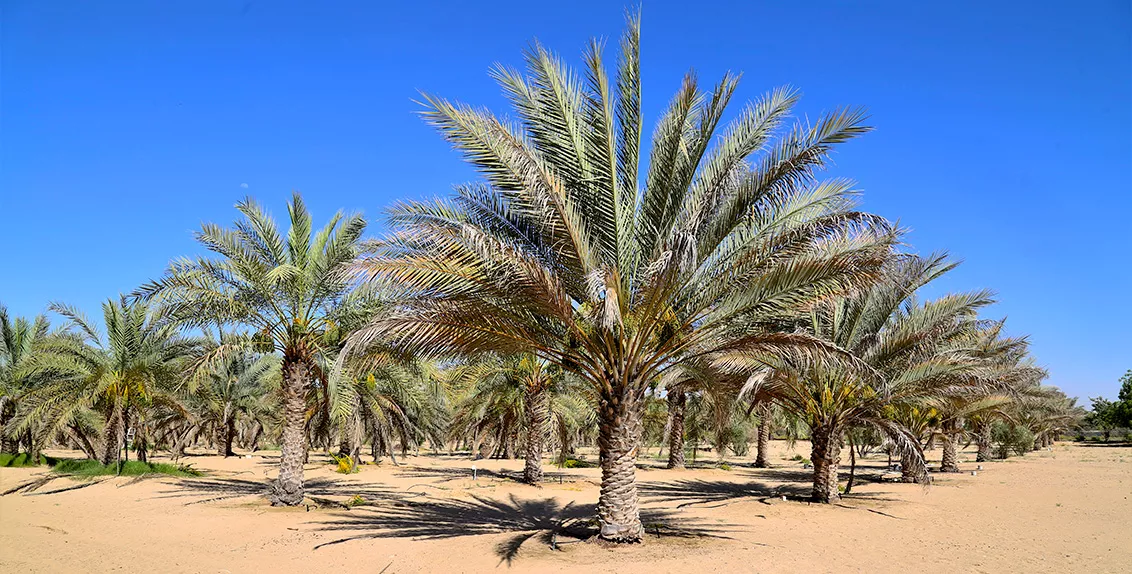New study gauges long-term salinity effect on date palm fruit yield
A new study conducted by a team of scientists from the International Center for Biosaline Agriculture (ICBA), the United Arab Emirates University (UAEU), and the University of Vigo, Spain, has produced a fresh insight into the long-term impact of salinity on fruit yield of 18 date palm varieties from the Arabian Peninsula.
Published in Agricultural Water Management, the study is based on the results of an experiment carried out at ICBA’s research station in Dubai from 2001 to 2016. Researchers evaluated the performance of 18 local and regional date palm varieties in an open-field area of 2.5 hectares.
In particular, they analyzed the effect of irrigation with water at three levels of salinity (5, 10 and 15 deciSiemens per meter) on the productivity of 10 date palm varieties from the UAE and eight from Saudi Arabia.
The experiment showed that the varieties responded differently to irrigation with saline water as yield stability was affected. Based on the varieties’ salinity tolerance thresholds, the researchers identified four different groups.
The first group included varieties with a high yield and salinity tolerance such as Lulu and Barhi. The second group comprised Khisab, Sukkari, Jabri and Shahla, which were identified as high-yielding but sensitive to salinity increase. The third group was characterized by medium to high yield potential at low salinity levels with moderate salinity tolerance and included Fardh, Um Al Hamam, Naghal, Abu-Maan and Rhothan. The fourth group included Shagri, Khnizi, Nabtat Saif, Ajwa Al Madinah, Khalas, and Maktoumi, which demonstrated low yield potential with low salinity tolerance.
The study is a result of extensive research efforts over 15 years to understand the impact of salinity on date palm varieties from the region and their adaptation capacity. Its findings are important for developing better and more resilient date palm varieties using conventional and advanced biotechnological tools.
Many aspects of date palm nutrition, physiology and genetics, among other things, have been thoroughly researched to date. However, research on the impact of salinity on date palm growth and productivity is limited to short-term studies or is focused mainly on the seedling stage, not the mature plants in the field.
According to the authors, in addition to determining the long-term effect of salinity, the study aimed to establish precise salinity thresholds for a diverse range of date palm genetic material.
The study will also have significant implications for water management, especially under desert and saline conditions, and mark an essential step towards deeper knowledge of the long-term consequences of salinity on date palm fruit yield.
Overall, the study will help to guide future research on genetic enhancement and development of integrated crop management approaches for date palm trees in desert and saline conditions.
